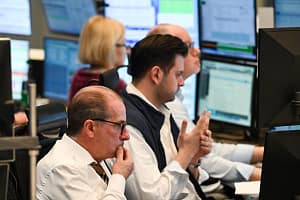Investment in Venture Capital Trusts (VCTs) has hit £144.5 million in four weeks to 25 March, up 18.8% on the same period last year.
The uptick follows a slower tax year so far, after two boom years, with flows down 19.8, with total flows this tax year of £730m (vs. £910m in previous tax year at equivalent date).
However, popular VCTs are seeing offers fill and close for the tax year and several other VCTs are approaching full capacity, and expected to close before the end of the tax year.
Alex Davies, Founder and CEO at Wealth Club, said, “It’s been a slower year for VCTs, following two previous boom years. That said, sales are still comfortably above the average over the last ten years, and are picking up as we approach the tax year end.
“Several popular VCTs, including Northern, Foresight, Octopus Apollo, British Smaller Companies and Albion VCTs have already filled. Others are rapidly approaching capacity, and once those targets are reached the managers will shut their doors for this tax year.
For regular investors VCTs are an end of tax year ritual like topping up an ISA. The tax breaks are fantastic, the contribution allowance generous and you get to invest in some very fast growing businesses which would otherwise be difficult to access.
“However, those planning on taking advantage of a quieter tax year and leaving it to the last minute should beware. Many VCTs actually close before the tax year end to give them time to get all the paperwork in order. Moreover as the deadlines get closer, many popular VCTs will sell out.
“If you spot a VCT you like, do it now before it’s too late.”
Why VCTs are worth investing in
Most investors are initially attracted to VCTs for the tax breaks, and they are generous. Investors can get up to 30% back in income tax relief up front, so invest £10,000 and you could get up to £3,000 back. Any dividends paid by the VCT are tax free and growth is free of capital gains tax too.
However, VCTs are more than just a tax planning tool. They’re probably the best way for UK investors to access fast growing smaller companies. Revenue growth from VCT investees far outstrips what you see in main market listed companies, and the result has been some attractive returns for investors over the longer term.
Exposure to high growth smaller companies also has the potential to diversify a conventional portfolio. Long-term performance is often only loosely correlated with the wider economy. Highly disruptive businesses grow by taking market share from incumbents rather than relying on market growth.
The rules governing VCTs mean they’re also an excellent way to back smaller businesses. It’s their role providing support to the next generation of UK start-ups, driving innovation and creating jobs, that earns them the tax relief from the government – and many investors feel that this is something they wish to support too.
Who should consider them?
VCTs are higher risk, and while they’re listed on the stock market, in order to qualify for tax relief investors must hold the shares of at least five years before selling – making them inherently long-term investments. Unlike most conventional funds and shares the minimum among you can invest is comparatively high – often £3,000 or more. All of this means they are best suited to wealthier or more sophisticated investors.
VCTs are popular with two groups in particular
The first is higher earners or wealthier investors who are limited in what they can put into more mainstream tax wrappers – those who already use their full £20,000 ISA allowance or whose pension contributions are tapered due to the amount they earn. The £200,000 a year annual VCT allowance is generous and can save higher earners up to £60,000 in upfront income tax.
The second group is those in, or near, retirement who use VCTs’ tax free dividends to supplement income from other sources. Because they’re higher risk, VCTs shouldn’t be considered a replacement for a pension, but they can help to top-up income from more conventional sources.





Leave a Comment